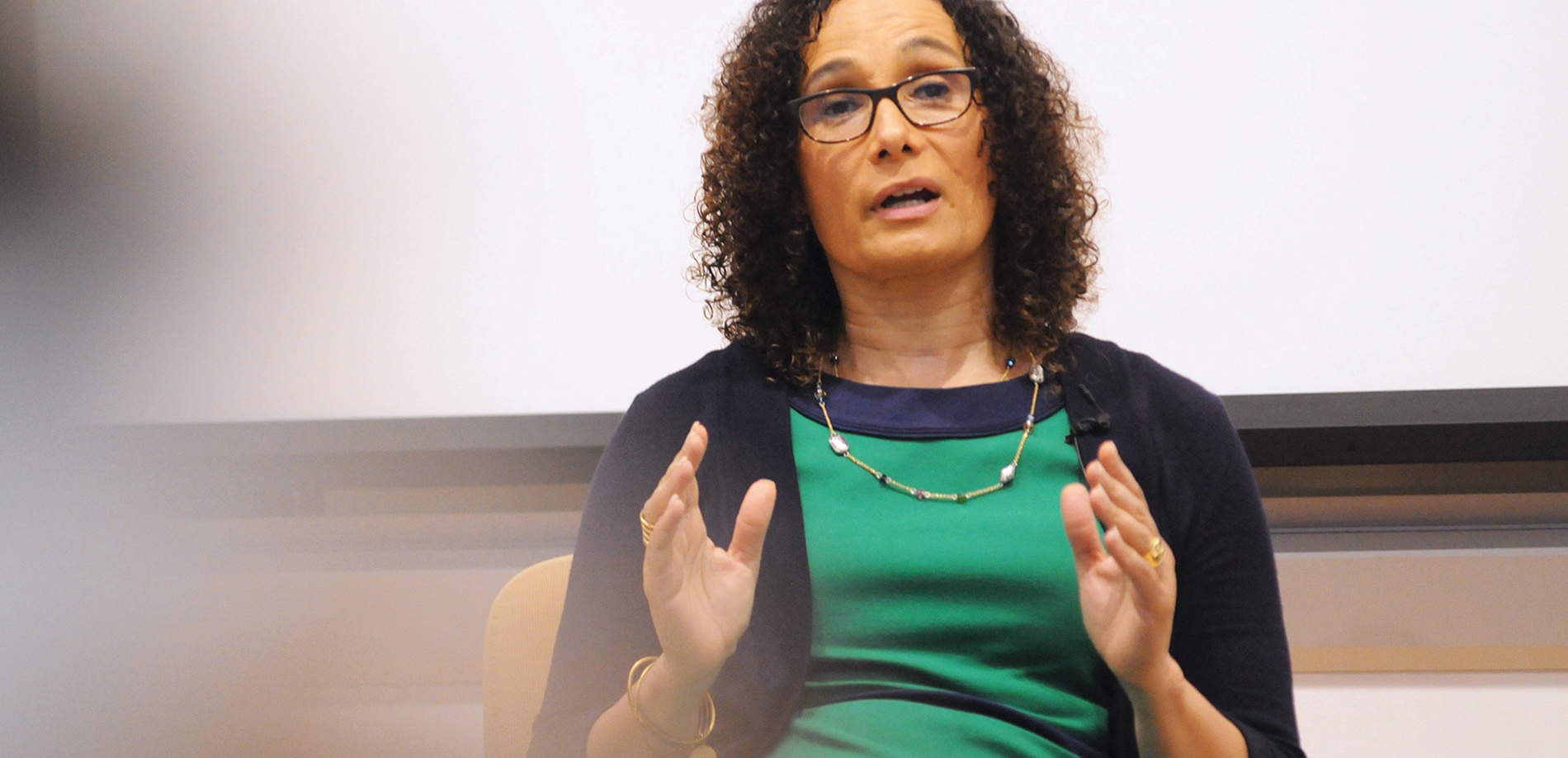“An American Tragedy” blared the cover of People magazine on April 12, 2012, alongside a picture of Trayvon Martin, the unarmed black teenager shot to death by neighborhood watch coordinator George Zimmerman.
Samuel Rosen ’14, a senior researcher at Brown’s Center for the Study of Race and Ethnicity in America (CSREA), displayed that cover at a Commencement forum he led with professor Tricia Rose ’93 PhD, CSREA’s director, entitled “How Structural Racism Works.” Calling Trayvon’s murder a “tragedy,” explained Rosen, obscures the structural racism underlying the incident.
Consider, he said: Martin was walking home from his father’s girlfriend’s house in an area that was 20 percent African-American, the percentage of black folks at which studies show white neighbors start to feel anxious. Plus, Martin was only in the area because he had been suspended from his Miami school for the third time—even though the school’s own guidelines didn’t warrant it. Studies have found black students are suspended at three times the rate of whites.
Put these types of factors together, noted Rosen, and it appears that Martin’s race made him uniquely vulnerable. Rosen and Rose have been working on a project examining how Martin’s case embodies systemic racism. In her work, Rose connects five factors that combine like “interlocking gears” to normalize discrimination against African-Americans: housing, education, media, wealth/jobs, and criminal justice.
“We usually think of racism as a single-sphere problem,” Rose said. “My argument is that it is a part of a discriminatory system, and that things that are discriminatory in one area are connected to discrimination in another.”

CSREA director Tricia Rose led the forum with Samuel Rosen.Photo: Frank Mullin
Politics & Law
The Gears of Racism
Exposing the structural bias behind Trayvon Martin’s murder
By Michael Blanding / July/August 2018
July 15th, 2018




